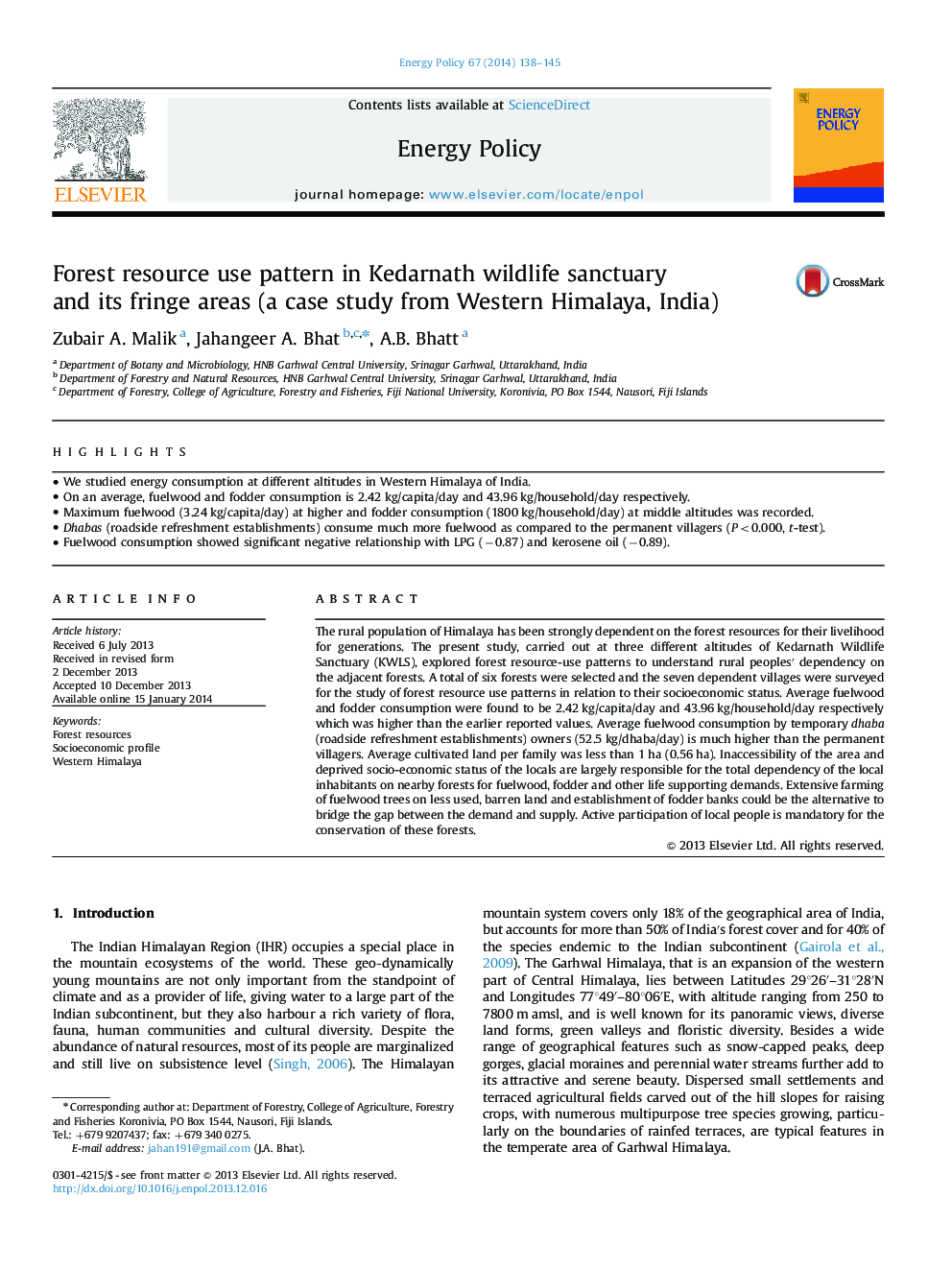| کد مقاله | کد نشریه | سال انتشار | مقاله انگلیسی | نسخه تمام متن |
|---|---|---|---|---|
| 7402210 | 1481291 | 2014 | 8 صفحه PDF | دانلود رایگان |
عنوان انگلیسی مقاله ISI
Forest resource use pattern in Kedarnath wildlife sanctuary and its fringe areas (a case study from Western Himalaya, India)
ترجمه فارسی عنوان
الگوی استفاده از منابع جنگل در حومه حیات وحش کیدارنات و مناطق حاشیه ای آن (مطالعه موردی از هیمالیا، هندوستان)
دانلود مقاله + سفارش ترجمه
دانلود مقاله ISI انگلیسی
رایگان برای ایرانیان
کلمات کلیدی
منابع جنگل، مشخصات اجتماعی و اقتصادی، هیمالیا غربی،
موضوعات مرتبط
مهندسی و علوم پایه
مهندسی انرژی
مهندسی انرژی و فناوری های برق
چکیده انگلیسی
The rural population of Himalaya has been strongly dependent on the forest resources for their livelihood for generations. The present study, carried out at three different altitudes of Kedarnath Wildlife Sanctuary (KWLS), explored forest resource-use patterns to understand rural peoples' dependency on the adjacent forests. A total of six forests were selected and the seven dependent villages were surveyed for the study of forest resource use patterns in relation to their socioeconomic status. Average fuelwood and fodder consumption were found to be 2.42Â kg/capita/day and 43.96Â kg/household/day respectively which was higher than the earlier reported values. Average fuelwood consumption by temporary dhaba (roadside refreshment establishments) owners (52.5Â kg/dhaba/day) is much higher than the permanent villagers. Average cultivated land per family was less than 1Â ha (0.56Â ha). Inaccessibility of the area and deprived socio-economic status of the locals are largely responsible for the total dependency of the local inhabitants on nearby forests for fuelwood, fodder and other life supporting demands. Extensive farming of fuelwood trees on less used, barren land and establishment of fodder banks could be the alternative to bridge the gap between the demand and supply. Active participation of local people is mandatory for the conservation of these forests.
ناشر
Database: Elsevier - ScienceDirect (ساینس دایرکت)
Journal: Energy Policy - Volume 67, April 2014, Pages 138-145
Journal: Energy Policy - Volume 67, April 2014, Pages 138-145
نویسندگان
Zubair A. Malik, Jahangeer A. Bhat, A.B. Bhatt,
